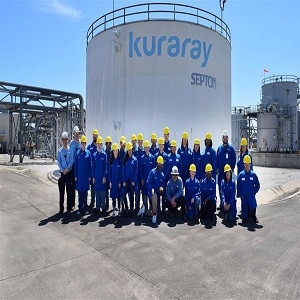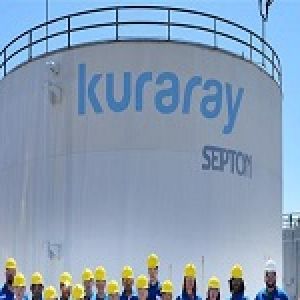Gohsenol and PVC Suspending Agent: Enhancing Performance in Polymer Applications
Posted by kuraraypovaluk on January 15th, 2024
Gohsenol, a brand synonymous with high-quality polyvinyl alcohol (PVA) products, has made significant contributions as a suspending agent in PVC formulations. In this article, we will delve into the role of PVC suspending agents and explore the specific qualities that make Gohsenol a standout choice for enhancing the properties of PVC in diverse applications.
Understanding PVC Suspending Agents:
Polyvinyl chloride (PVC) is a widely used thermoplastic polymer known for its versatility in applications ranging from construction materials to medical devices. In the production of PVC, especially in the manufacturing of resin, it is essential to maintain the stability of the polymer particles to ensure uniformity and quality in the final product. PVC suspending agents play a pivotal role in this process.
- Particle Suspension: PVC suspending agents are additives designed to prevent the agglomeration or settling of PVC particles during the polymerization process. This ensures that the polymer particles remain uniformly dispersed in the reaction medium, leading to a consistent and high-quality PVC resin.
- Improved Polymerization: The addition of suspending agents facilitates the polymerization of vinyl chloride monomers, allowing for better control over the size and distribution of the PVC particles. This, in turn, contributes to the overall performance and properties of the final PVC product.
- Reduced Particle Size: Effective PVC suspending agents aid in maintaining a smaller particle size, which is crucial for achieving desirable properties in the finished PVC resin. Smaller particle sizes often lead to enhanced mechanical strength, flexibility, and processability of the polymer.
Gohsenol as a PVC Suspending Agent:
Gohsenol, produced by Nippon Gohsei, is a renowned brand offering a range of high-performance polyvinyl alcohol (PVA) products. Gohsenol's exceptional qualities make it an ideal choice as a PVC suspending agent, influencing various aspects of the PVC manufacturing process and the properties of the final polymer.
- Excellent Dispersing Ability: Gohsenol exhibits outstanding dispersing ability, ensuring the uniform dispersion of PVC particles during the polymerization process. This ability is crucial for preventing the aggregation of particles, contributing to the consistency and quality of the resulting PVC resin.
- Particle Size Control: Gohsenol aids in controlling the particle size of PVC during polymerization. The ability to maintain a smaller and more uniform particle size leads to improved mechanical properties and a more homogeneous PVC resin.
- Stabilization of PVC Suspension: Gohsenol functions as a stabilizing agent, preventing the settling or agglomeration of PVC particles. This stabilizing effect ensures a stable and consistent suspension throughout the polymerization process, resulting in a higher-quality PVC resin.
- Enhanced Polymer Performance: The use of Gohsenol as a PVC suspending agent contributes to the overall performance of the polymer. The controlled particle size and uniform dispersion achieved with Gohsenol influence the mechanical strength, thermal stability, and processing characteristics of the final PVC product.
Applications of Gohsenol in PVC Formulations:
- Construction Materials: Gohsenol-enhanced PVC formulations find applications in the construction industry for manufacturing pipes, fittings, and profiles. The controlled particle size and stability impart improved mechanical strength and durability to these construction materials.
- Medical Devices: PVC is widely used in the production of medical devices, and the use of Gohsenol as a suspending agent ensures the uniformity and stability of the PVC resin. This is crucial for meeting the stringent requirements of medical-grade PVC used in items like tubing and IV bags.
- Packaging Materials: Gohsenol plays a role in enhancing PVC formulations for packaging materials. The stability and uniformity achieved through Gohsenol contribute to the production of high-quality PVC films and sheets used in various packaging applications.
- Automotive Components: In the automotive industry, Gohsenol-modified PVC is utilized for manufacturing components such as gaskets, seals, and interior trims. The controlled particle size and stability provided by Gohsenol contribute to the desired properties of these automotive components.
Advancements in PVC Processing:
The incorporation of Gohsenol as a PVC suspending agent represents a significant advancement in PVC processing, influencing both the efficiency of manufacturing processes and the quality of the final polymer.
- Improved Manufacturing Efficiency: Gohsenol's role as a PVC suspending agent enhances the efficiency of the polymerization process by preventing issues such as particle agglomeration. This results in smoother manufacturing processes and increased production efficiency.
- Consistent Product Quality: The use of Gohsenol ensures a more consistent and high-quality PVC product. The controlled particle size and uniform dispersion contribute to predictable material properties, allowing manufacturers to achieve desired performance characteristics in the final products.
- Customized PVC Formulations: Gohsenol's compatibility with various PVC formulations enables manufacturers to tailor the properties of the polymer to meet specific application requirements. This flexibility in formulation contributes to the versatility of PVC in different industries.
Conclusion:
Gohsenol's role as a PVC suspending agent highlights the importance of additives in influencing the properties and performance of polymers. The controlled dispersion, particle size, and stability achieved with Gohsenol contribute to the overall advancements in PVC processing, leading to high-quality products across diverse industries. As the demand for tailored polymer solutions continues to grow, the innovative contributions of additives like Gohsenol play a pivotal role in shaping the future of polymer applications.



